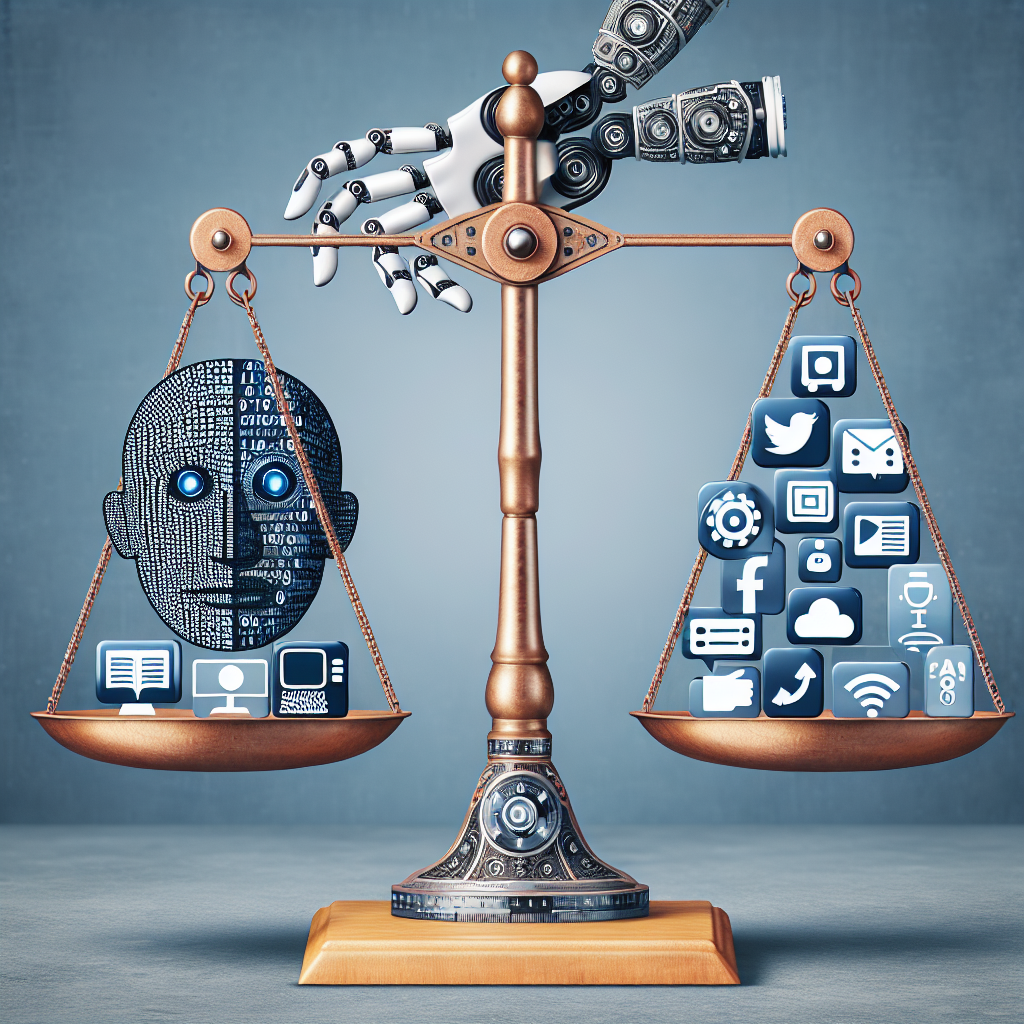Media bias has been a long-standing issue in the world of journalism and news reporting. With the rise of social media and the internet, it has become easier for individuals and organizations to spread their own biases and agenda through the media. This has led to a growing concern about the accuracy and fairness of news reporting, as well as the impact it has on public perception and decision-making.
Artificial Intelligence (AI) has been touted as a potential solution to the problem of media bias. By using algorithms and machine learning techniques, AI can analyze large amounts of data and detect patterns of bias in news reporting. It can also help to identify fake news and misinformation, and provide fact-checking services to ensure that the news being presented is accurate and unbiased.
One of the key advantages of using AI to address media bias is its ability to process vast amounts of information in a short amount of time. This allows AI to analyze news articles, social media posts, and other forms of media to detect patterns of bias and misinformation. AI can also help to identify the sources of bias, such as political affiliations, financial interests, or personal biases of the journalists or media organizations.
Another advantage of using AI to address media bias is its ability to provide real-time analysis of news reporting. This can help to identify bias and misinformation as it is happening, allowing for a more timely response to correct the information and prevent it from spreading further. AI can also help to provide context and background information to help readers and viewers better understand the news they are consuming.
Despite the potential benefits of using AI to address media bias, there are also some limitations and challenges to consider. One of the main challenges is the issue of algorithmic bias, where the AI itself may be biased based on the data it is trained on. This can lead to the perpetuation of existing biases and stereotypes in news reporting, rather than addressing them.
Another challenge is the issue of transparency and accountability in AI systems. It can be difficult to understand how AI algorithms work and how they make decisions, which can make it hard to trust the results they provide. There is also the risk of AI being used to manipulate news reporting and spread misinformation, rather than to address bias and improve the quality of journalism.
Despite these challenges, there are a number of ways that AI can be used to help solve the problem of media bias. One approach is to use AI to provide fact-checking services and to flag misinformation in news reporting. By analyzing the content of news articles and comparing it to other sources, AI can help to identify false or misleading information and prevent it from being spread further.
Another approach is to use AI to provide personalized news recommendations to users based on their interests and preferences. By analyzing the content of news articles and the behavior of users, AI can help to filter out biased and unreliable sources of news, and provide users with a more diverse and balanced selection of news articles.
Overall, AI has the potential to help solve the problem of media bias by providing tools and techniques to analyze news reporting, detect bias and misinformation, and provide more accurate and balanced information to the public. While there are challenges and limitations to consider, AI can be a valuable tool in the fight against media bias and the spread of misinformation.
FAQs:
1. Can AI completely eliminate media bias?
While AI can help to detect and address media bias, it is unlikely that it can completely eliminate bias from news reporting. Bias is a complex and multifaceted issue that is influenced by a variety of factors, including personal beliefs, political affiliations, financial interests, and societal norms. AI can help to identify and correct bias in news reporting, but it is ultimately up to journalists and media organizations to ensure that their reporting is accurate and unbiased.
2. How can AI help to detect fake news and misinformation?
AI can help to detect fake news and misinformation by analyzing the content of news articles, social media posts, and other forms of media. By using algorithms and machine learning techniques, AI can identify patterns of misinformation, such as false claims, misleading headlines, and manipulated images. AI can also compare the content of news articles to other sources of information to determine if it is accurate and reliable.
3. What are some examples of AI tools that can help to address media bias?
There are a number of AI tools and techniques that can help to address media bias, including fact-checking services, content analysis algorithms, and personalized news recommendations. Fact-checking services use AI to analyze the content of news articles and flag misinformation. Content analysis algorithms can help to detect bias in news reporting by analyzing the language and tone used in news articles. Personalized news recommendations use AI to filter out biased and unreliable sources of news and provide users with a more diverse and balanced selection of news articles.
4. How can journalists and media organizations use AI to improve the quality of their reporting?
Journalists and media organizations can use AI to improve the quality of their reporting by using AI tools and techniques to analyze news articles, detect bias and misinformation, and provide fact-checking services. By incorporating AI into their workflow, journalists can ensure that their reporting is accurate, unbiased, and informative. AI can also help journalists to identify new sources of information, provide context and background information, and engage with their audience in a more meaningful way.

